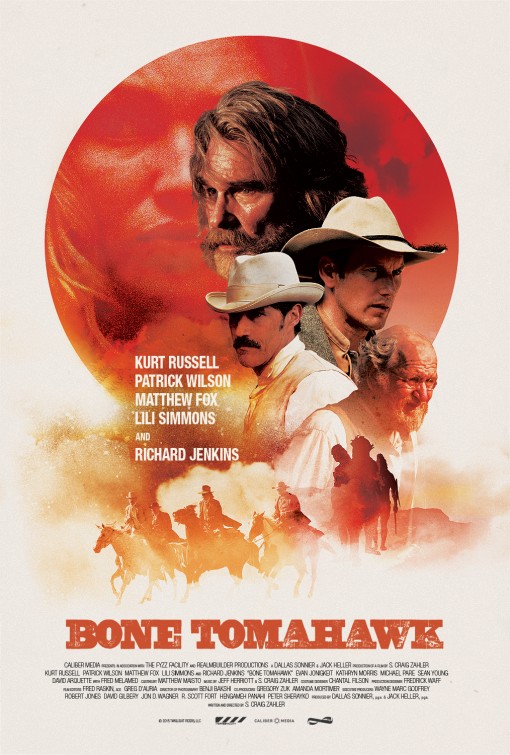
Calling BONE TOMAHAWK ‘a slow burn that leaves marks behind’ would be an okay description for a start, but really, this movie is more like sitting down to spend a Sunday afternoon watching John Ford Westerns on TCM and an hour into that reverie, being bushwhacked by an atomic mutant carrying a blowtorch.
BONE TOMAHAWK does serve fair warning right from the beginning, opening as it does on two weaselly scavengers (played by genre-film icon Sid Haig and David Arquette in RAVENOUS mode) murdering pioneers and plundering their corpses. This rotten pair we don’t have to spend a lot of time around, at least, since in the process of committing their crimes they disturb a sacred native burial ground and summon up… something. One of the two is killed with a shocking quickness, and the other runs back to civilization, not aware and not caring that he’s been followed.

But after an opening sequence straight out of a horror movie, the film seemingly down-shifts a little, sending us to the town of Bright Hope, where a settler named Arthur O’Dwyer (Patrick Wilson) and his younger wife Samantha (Lili Simmons) are adjusting to the injury he sustained while working on their house. Patrick Wilson is sort of a secret weapon in movies — he generally serves as casting shorthand for a sort of all-American decency and capability, at which point savvier filmmakers can either bounce more out-there characters off of him for contrast, or allow him to surprise an audience by being either more or less than we may have expected. In BONE TOMAHAWK, writer/director S. Craig Zahler gives us a surprising amount of time to get to know and like this couple and some of their neighbors. The Old West dialogue is flavorful and sure to appease anyone who misses Deadwood as much as I do, and the performances by the ensemble cast, including a near-unrecognizable Richard Jenkins as a Walter Brennan type named Chicory, are sly and ingratiating. It’s a minor parade of well-liked character actors, with just enough age and costuming on them that it takes a moment to recognize them before remembering what you liked them from. The casting directors and/or producers even managed to dig up James Tolkan (BACK TO THE FUTURE, TOP GUN, ARMED & DANGEROUS, you’d know him if you saw him!)
Two characters serve to remind us that, no matter how much we’re enjoying the rhythms of the movie’s florid barroom banter, darkness awaits out on the frontier. One of the two is the town’s sheriff, Franklin Hunt, who seems more immediately suspicious of the scavenger who seeks sanctuary in Bright Hope than maybe he might. He’s played by Kurt Russell in what was, in retrospect, both a warm-up for his role in THE HATEFUL EIGHT and a sort of mirror-universe version of the same. As is the case with all the characters in this efficient but rich Western, you quickly get the sense these characters have histories, and that Sheriff Hunt has seen some dark shit in his day. Even so, he’s unprepared for what’s to come. The other character is a poised and well-dressed gunfighter named John Brooder, who Gregory Peck might have played if this movie were made in 1950 but who is played in 2015 by Matthew Fox (best known maybe for his role on Lost). In some ways he’s the movie’s most fascinating character, because you’re given several reasons to dislike him, and yet you probably won’t.
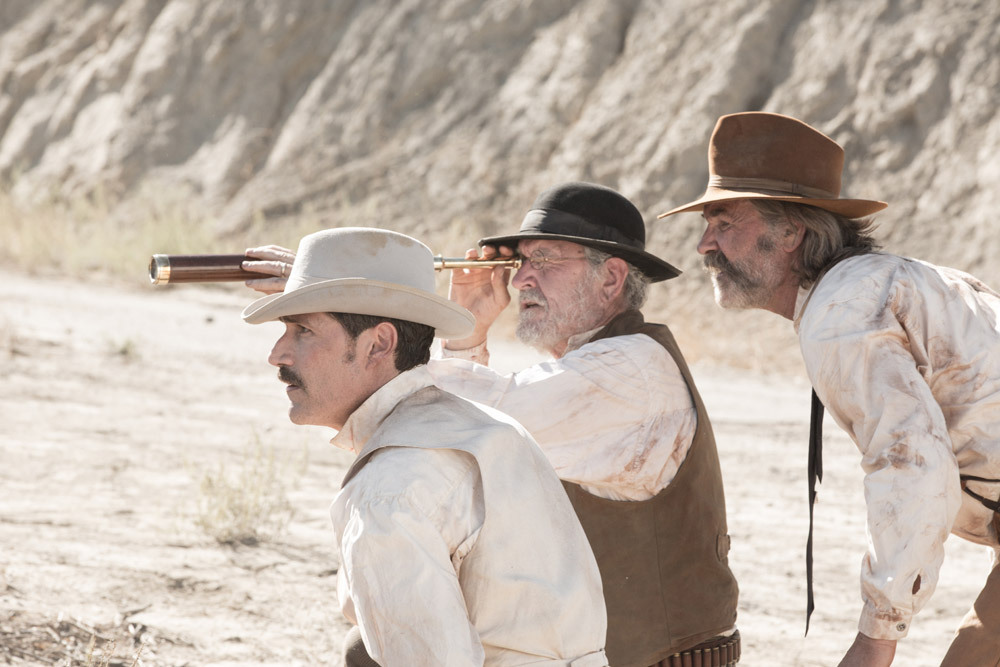
Brooder and Hunt aren’t presented as allies to each other, and in fact they squabble quite a bit, but from the start they indicate a shared experience, a familiarity with barbaric violence, that characters like the more outwardly decent and guileless Chicory and O’Dwyer don’t possess. When the subject of Indians arises, Brooder and Hunt suggest a scary kind of casual racism, which is born from everyday ignorance but from actual field experience. They’re both “the man who knows Indians” that Richard Slotkin describes in Gunfighter Nation. No movie could benefit from comparisons to THE SEARCHERS, but what’s so amazingly interesting about BONE TOMAHAWK is that it goes boldly and full-bore into the fear of the quote-unquote racial other that most American Westerns of the studio era danced around but rarely confronted. Brooder and Hunt aren’t bigoted against Indians to the extent that John Wayne’s Ethan Edwards was, but they have a healthy distrust of their enemy. In a way, what’s scariest to me about the ghastliness that eventually unfurls in BONE TOMAHAWK is that those two guys weren’t exactly wrong. If anything, they were unprepared for the extremity of what they end up facing. In the era of ISIS/ISIL/Daesh and mass shootings, I’m afraid the subtext couldn’t be more relevant.
S. Craig Zahler describes BONE TOMAHAWK as “a rescue Western,” genre-wise, and that’s the basic plot of the film — Samantha O’Dwyer and others are taken, and an unlikely four-man posse gears up to bring them back. But the story is fascinating in the way it teases out that plot to such an extent that it almost meanders. Once the group of four gets going, there are still several long passages without any appearance from the eventual villains of the piece. Much time is spent developing the lead characters — Hunt, O’Dwyer, Chicory, and Brooder — along the way, to the point where the movie is almost as much a “hang” with them as it is a pursuit narrative. That’s not to say the movie lulls the audience into a false sense of security, since we always know where we’re headed — it’s just that we have no idea how awful it’s going to get once we get there.
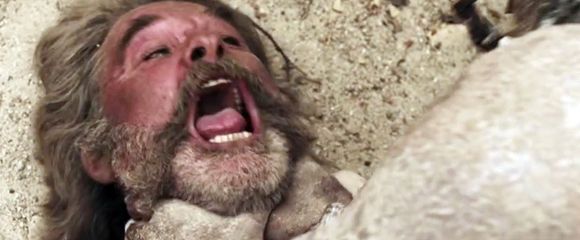
The violence in BONE TOMAHAWK is unsparing and merciless. It’s the precise dramatic opposite of the violent ballets that make kung-fu films so enjoyable — the violence here is nasty, brutish, and except for one excruciating instance, short. American movies tend to spoil us for the hero moment, whereas this one does its damnedest to deny us that. There’s no orchestral swell, no memorable catchphrases. The best anyone can hope for, by the time the film’s climax rolls around, is to survive it.
BONE TOMAHAWK is all the more admirable for being a film that couldn’t have been easy to make or to get made. Its look, while very much compelling, is less sweepingly epic and beautiful than straight-forward and direct. No doubt that’s a function of budget, but the story is well served by the presentation. Because the film doesn’t romanticize the look of the American West, it translates more urgently to the modern eye. I love a pretty Western more than almost any other type of film, but the grubbiness and relative modesty of BONE TOMAHAWK has much to do with its impact. At its best, the Western genre uses the prism of our collective cultural past to take a snapshot of our present. It’s fun for us genre-film nuts to group BONE TOMAHAWK as a horror-slash-Western, but realistically, it’s just a straight-up Western. That’s how frightening some aspects of the world are right now.
— JON ABRAMS.
P.S. The end credits song, by S. Craig Zahler and Jeff Herriott, is so necessary:
LOOKING FOR UNDERGROUND CULT MOVIES, DVDs, LIMITED VHS & OTHER COOL STUFF.
CHECK OUT THE DAILY GRINDHOUSE/CULT MOVIE MANIA STORE
- [THE BIG QUESTION] WHAT’S YOUR FAVORITE FEMALE ENSEMBLE IN MOVIES? - July 22, 2016
- [IN THEATERS NOW] THE BOY (2016) - January 24, 2016
- Cult Movie Mania Releases Lucio Fulci Limited Edition VHS Sets - January 5, 2016
Tags: David Arquette, Fred Melamed, Horror, James Tolkan, Jamie Hector, Jamison Newlander, Jeff Herriott, Kurt Russell, Lili Simmons, Matthew Fox, Patrick Wilson, Richard Jenkins, S. Craig Zahler, Sean Young, Sid Haig, Westerns, Zahn McClarnon

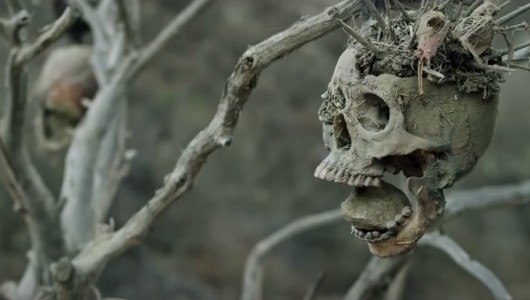

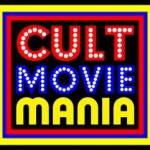




No Comments